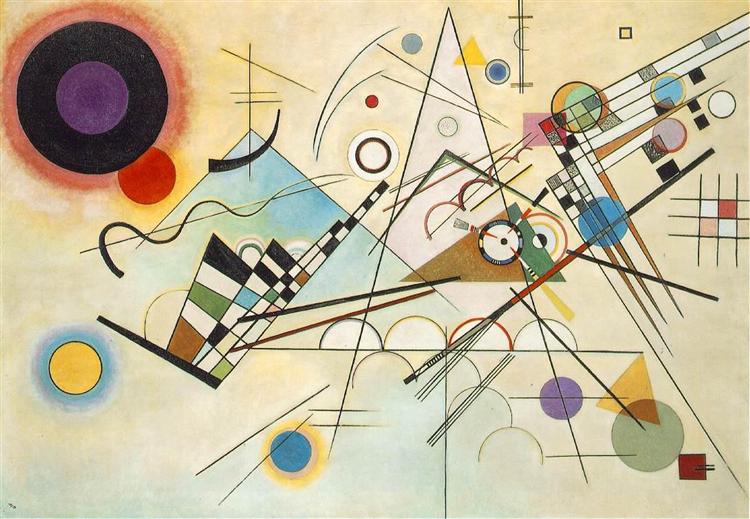Possible Classroom Concepts: Mathematics – Geometry (Lines)
Language Arts – Literature
Possible Art Concepts: Art History – Paul Klee, Bridget Riley, Wassily Kandinsky
Elements of Art (Lines, Colors), Nonobjective Art, Primary and Secondary Colors
“Now for the next installment of Integrating Art and Geometry.” In my last post, we talked about a point or dot. The next logical geometric concept is line. As artist, Paul Klee, put it, “A line is a dot that went for a walk.” In geometry, a line is described as an infinite number of points that extend infinitely either direction. The two theories are similar wouldn’t you say? In art, a line is one of the “elements of art”. The other elements being shape, form, color, space and texture. Art teachers teach the elements just as classroom teachers teach the alphabet and numbers. The elements are the building blocks of all works of art.
While talking about points, we looked at Op artist, Bridget Riley’s dot paintings. It just so happens that Riley also made line paintings. You can see one of her line paintings and those of other line painters here. (This includes a line painting by our friend, Paul Klee!) Since both geometry and art include the concept of line, why not combine the two units of study? I’ll scratch your back if you’ll scratch mine. Find some nice interactive line activities here.

Wassily Kandinsky’s “Composition VIII”
You could also examine Kandinsky’s “Composition VIII”. As you can see, Wassily has included many lines in this nonobjective composition. (Nonobjective means that the artist is not trying to reproduce a person, place or thing. I always told my students the prefix non means no, so it means no object.) This piece can be used as a review for line concepts or at the end of the entire geometry unit. This painting is a gold mine, containing lines, shapes, and angles. First, play “Eye Spy” with the class to see how many line concepts Kandinsky included in his painting. (i.e.: line segments, intersecting lines, perpendicular lines, parallel lines, etc.) Okay, I know that the short lines are not true line segments because they do not include a point at either end. These thoughts can be pointed out during the class discussion. How are these lines the same and different from geometry lines? Students can then prove their understanding of line concepts by creating their own black crayon nonobjective line compositions. To enrich this lesson further, read The Noisy Paint Box by Barb Rosenstock or watch this reading from youtube. To brighten up these line compositions, the students can add color with watercolors. Students could also use only primary colors (red, yellow and blue) to discover or review the secondary colors they make where the colors overlap. You could even play some music while they paint just like Kandinsky did. After the works dry, students can turn over their papers and compose a written explanation of the line concepts they included. Or, students can trade papers and see how many line concepts each neighbor can point out. You can see Kandinsky in the process of painting here.
For this lesson have “No more pencils, no more books!” Let’s have crayons, paints and music please! Give it a try!
Come by again real soon!
3 comments